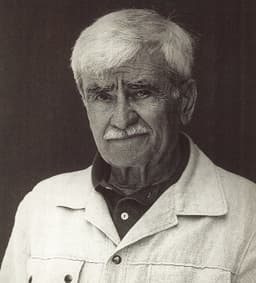
Alberto Burri
@alberto-burri
Alberto Burri: Master of Material Transformation
Alberto Burri stands as one of the twentieth century's most innovative and provocative artists. Born in Città di Castello, Italy in 1915, Burri initially trained as a physician before discovering his true calling as an artist during World War II while serving as a medical officer. This unexpected path would lead him to revolutionize modern art by challenging conventional notions of beauty and artistic materials.
Burri pioneered what became known as Arte Povera, or "poor art," a movement that embraced humble, discarded materials as legitimate artistic expressions. Rather than rejecting industrial waste and everyday objects, he celebrated them, transforming burlap, tar, charred wood, and metal into profound aesthetic statements. His work anticipated elements of Fluxus and Nouveau Réalisme while maintaining a distinctly personal vision rooted in Italian sensibility and existential questioning.
His breakthrough came in the late 1940s with his iconic Sacchi series, where he stitched together used burlap sacks with bold, deliberate gestures. Works like "Sacchi e Tele" showcase his ability to extract eloquence from poverty, creating compositions of surprising emotional depth. Burri later expanded into combustion paintings and plastic works, experimenting with fire to create dramatic, scorched surfaces that suggested both destruction and renewal.
Burri's contributions fundamentally shifted how artists conceptualized materials and sustainability. He demonstrated that artistic merit transcended expensive mediums, influencing countless contemporary artists who embrace found objects and recycled materials. His retrospectives at major institutions worldwide cemented his status as a visionary.
Until his death in 1995, Burri remained actively engaged in artistic experimentation. Today, his legacy endures through the Burri Foundation in his hometown, continuing to inspire artists who seek meaning in materiality and transformation.